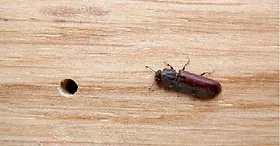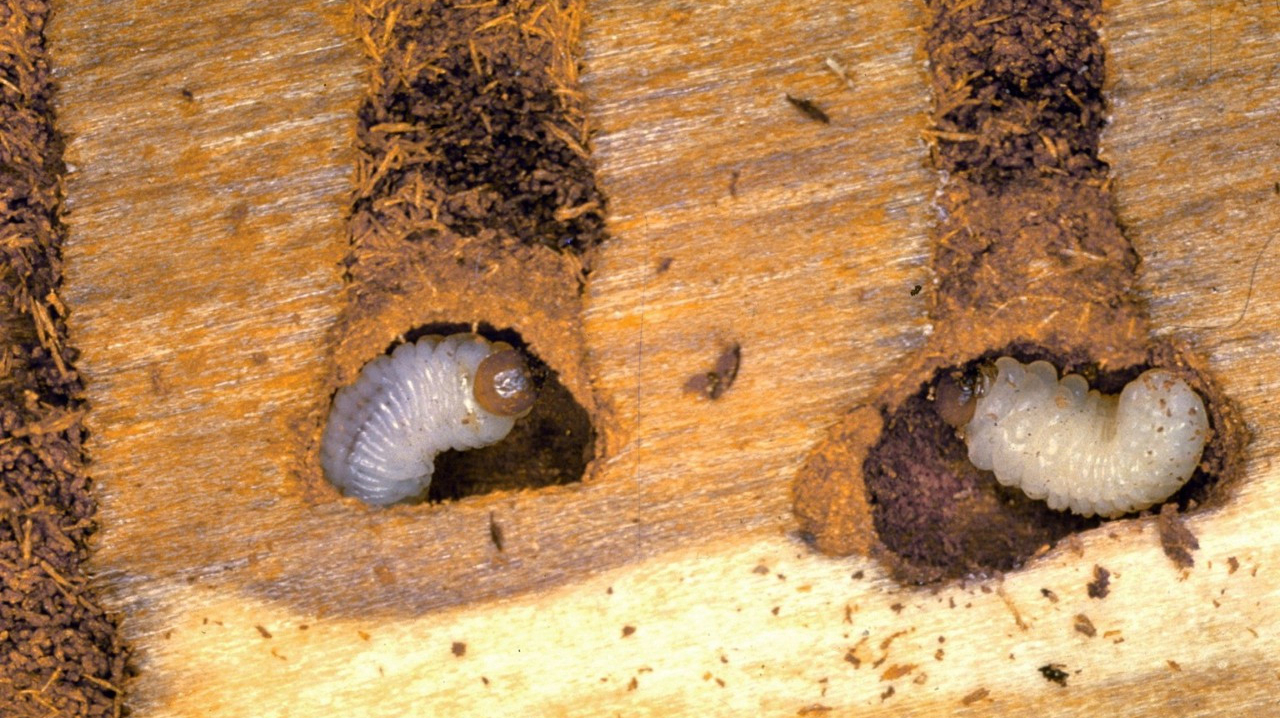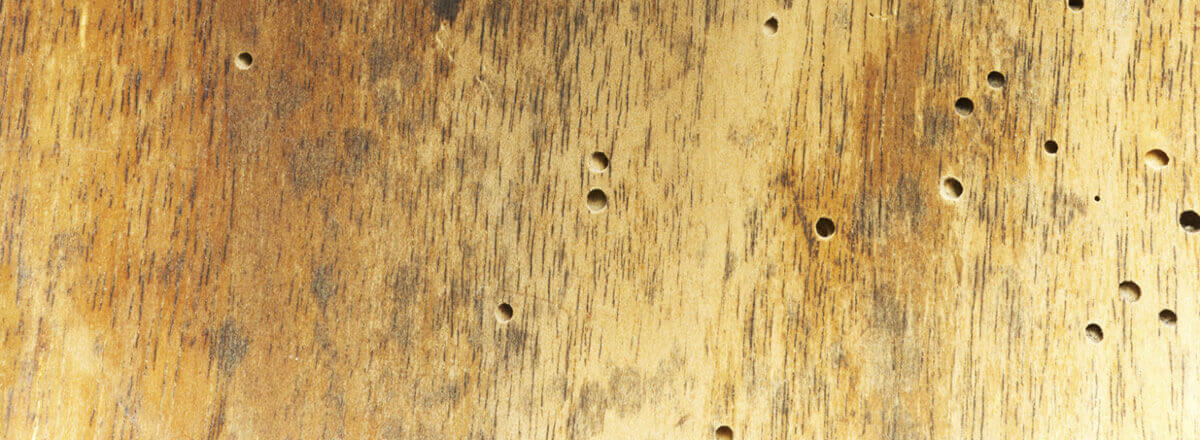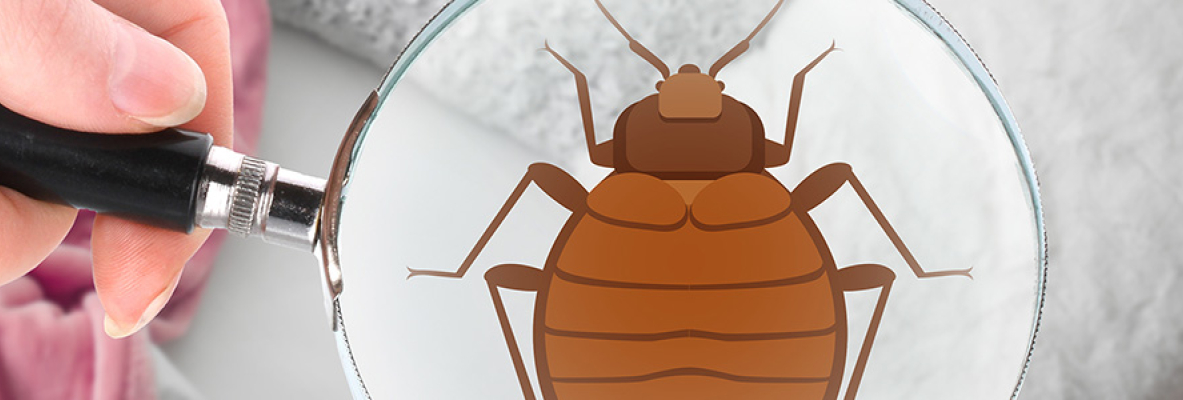
Know more about Woodworm
Infesting both seasoned hardwood and softwood timbers, usually ten years or older, common furniture beetle infestations can be detected in small holes accompanied by fine powder-like sawdust, known as “frass.” As common furniture beetle larvae or woodworms grow, they eat their way to maturity, leaving tiny holes in the surfaces of wood as they exit the wood as adults.
After exiting the wood, usually from the spring to early fall, adult common furniture beetles mate and the fertilized females lay up to fifty eggs in tiny crevices in your home’s wood, as well as exit holes made by emerging adults. While common furniture beetles infest wood furniture, as their name implies, these wood boring insects can also infest damp wood as well. Homeowners, suspecting a common furniture beetle infestation should check for tiny holes and frass in crawl spaces, flooring, around window frames, wood siding and other moist areas in their homes.
Due to the long 3 to 4-year life cycle of common furniture beetles, home contractors and house timber suppliers may be unaware of the presence of common furniture beetle eggs or developing larvae deep in housing or furniture timbers. Common furniture beetle infestations may not be visible until years after the timber has become part of a home's structural profile.

The influence of wood components and parts on the growth and development of pests
1. The influence of wood components on dry wood pests. Wood is composed of countless small cells. The cell wall is composed of polysaccharide cellulose and hemicellulose, as well as aromatic lignin, of which cellulose accounts for 40-62%, and lignin is 18- 38%, hemicellulose accounts for 8-37%, starch is more than 60%, sugar is 6%, and protein is 1-2%. Different pests have different nutrient requirements for wood. The beetle can directly digest the cellulose in wood by digestion in its own body; mealy beetle cannot digest lignin, cellulose and hemi-fiber, it mainly absorbs starch and a small amount of wood in the wood. The sugar; bamboo beetles and long beetles also use starch and sugar as nutrient sources.
2. The effect of different parts of wood on pests. Different parts of wood contain different nutrients: sapwood cells contain richer nutrients, which are suitable for termites to eat by pests, so heartwood is more resistant to insects than sapwood.
3. The influence of tree species. Wood borers eat and digest different parts and substances of wood. At the same time, because different kinds of wood contain different substances, their feeding is also different.

Harmful characteristics of wood borers
In addition to termites, the pests that damage wood include longhorn beetles and borers. There are many species of borers; the size of the boreholes can roughly distinguish which type of borer. Among the borers, the most headache for carpenters and decorators is mealworms.
In recent years, with the increase in wood decoration, especially the increase in residential insect pests, it has a serious impact on people's lives, and has gradually attracted people's attention. When environmental conditions permit, organic furniture is also susceptible to pests and parasitism. Common furniture pests include termites, wood beetles, mealy beetles, etc. These small insects with a size of less than 5mm, the larvae will penetrate into the furniture and gnaw, causing The dense and hollow acupuncture passages will fly out of the holes along the acupuncture passages after they mature and emerge, and mate and lay eggs again, completing their life cycle cycles.
Therefore, the appearance of the furniture should be checked frequently. If there are many small worm holes on the surface, you must take a closer look at whether you have been infected by pests. If there are small round holes in the wood products, and the larvae foraging in the wood products, the wood products will be hollow. . In addition, there are some fine dust-like powders, which indicate that there are still harmful insect activities inside. You must immediately use a plastic bag to seal and isolate them, and find relevant professionals for deworming treatment.
Media coverage and our pest extermination process






